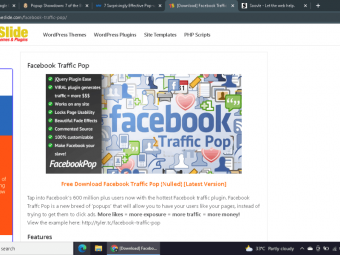Mastering Character Arcs
Tags: Fiction Writing
How to Write Amazing Character Arcs That Sell Novels
Last updated 2022-01-10 | 4.9
- How to determine which character arc—positive- negative
- or flat—is right for your story.
- Why you should NEVER pit plot against character. Instead
- learn how to blend story structure and character development.
- How to harmonize the relationship between character and theme—so you can stop churning out disjointed stories.
What you'll learn
* Requirements
* An interest in writing meaningful novels--that's it!Description
Have you written a story with an exciting concept and interesting characters—but it just isn’t grabbing the attention of readers or agents? It’s time to look deeper into the story beats that create the realistic and compelling character arcs that drive great fiction. Internationally-published and award-winning novelist K.M. Weiland shares her acclaimed method for achieving memorable and moving character arcs in every book you write.
By applying the foundation of the Three-Act Story Structure and then delving even deeper into the psychology of realistic and dynamic human change, Weiland offers a beat-by-beat checklist of character arc guidelines that flexes to fit any type of story.
This comprehensive course will teach you:
How to determine which arc—positive, negative, or flat—is right for your character
Why you should NEVER pit plot against character. Instead, learn how to blend story structure and character development
How to harmonize the relationship between character and theme—so you can stop churning out disjointed stories
How to recognize and avoid the worst pitfalls of writing novels with no character arcs
How to hack the secret to using overarching character arcs to create amazing trilogies and series
And much more!
Gaining an understanding of how to write character arcs is a game-changing moment in any author’s pursuit of the craft. Learn how to take your stories from good to great and bring your characters to unforgettable and realistic life!
Who this course is for:
- Fiction writers
Course content
7 sections • 36 lectures
Can You Structure Character Arcs Preview 06:46
What if there were a surefire secret to creating stunning character arcs? Would you be interested in discovering it? If you care about connecting with readers, grabbing hold of their emotions, and creating stories that will resonate with them on a level deeper than mere entertainment, then the answer has to be a resounding yes!
The #1 Mistake Authors Make Preview 10:51
Character arcs are easy, right? Somewhere in between the beginning and the middle of the book, the character changes. What could be simpler? And yet, when we get right down to the nitty-gritties, character arcs are also pretty darn hard. Why? Because humans never change in simplistic, easy, on-and-off-like-a-light-switch ways.
This is why the number one mistake authors make with character arcs is that they try to remake their character into someone new. Find out how to change your characters without ruining your character arc before you even get started!
The Lie Your Character Believes Preview 08:51
The Change Arc is all about the Lie Your Character Believes. His life may be horrible, or his life may seem pretty great. But, festering under the surface, is the Lie.
The Thing Your Character Wants vs. the Thing Your Character Needs Preview 09:52
The Lie plays out in your character’s life, and your story, through the conflict between the Thing the Character Needs (the Truth) and the Thing the Character Wants (the perceived cure for the symptoms of the Lie).
Your Character's Ghost Preview 07:30
If there’s one solid rule in fiction, it’s that every effect must have a cause. If your character is in need of undergoing a change arc, then one of your first tasks is figuring out why he needs to change. What happened to him to cause him to embrace this obviously damaging Lie?
The Characteristic Moment Preview 11:20
First impressions do count. And your protagonist’s Characteristic Moment is his first chance to impress your readers. In short, a failed Characteristic Moment can very likely mean a failed story.
The Normal World Preview 09:58
In a story, the Normal World will play an important role in the first quarter of your story—the First Act. This entire segment can basically be summarized as “set-up,” and the Normal World plays a vital role in grounding the story in a concrete setting. Even more important, the Normal World creates the standard against which all the personal and plot changes to come will be measured.
The First Act Preview 13:01
On the surface, the First Act seems to be the slowest part of the story—and it often is. It’s just setup, after all, right? True enough, except for that one little word just. It isn’t “just” setup; it’s SETUP! It sets up the plot, but even more importantly, it sets up the character arcs.
The First Plot Point Preview 11:32
We might visualize a locked door separating the First Act from the Second Act. The First Plot Point is where the protagonist sticks his key in that door and unlocks it. And, like Pandora’s box, he ain’t never going to get it shut again.
The First Half of the Second Act Preview 13:38
In the structure of character arcs, the First Half of the Second Act is where your character ventures (or is thrust) into uncharted territory—and gets lost. He may not quite see it that way himself, but this is where he begins to discover that the old rules (the Lie He Believes) no longer apply.
The Midpoint Preview 10:56
In a positive change character arc, your protagonist will have spent the First Half of the Second Act blundering around in foreign territory, making mistakes based on false assumptions, and getting his hand slapped for his every wrong move. But he’s also going to have been slowly—maybe even subconsciously—learning his lesson and figuring things out. These personal revelations are going to lead him up to a very special turning point at the story’s Midpoint.
The Second Half of the Second Act Preview 17:19
The Second Half of the Second Act is where your character shifts out of the reactive phase (in which the conflict is being controlled by the antagonist) and starts moving into the active phase (in which he starts taking control of the conflict for himself).
The Third Plot Point Preview 13:15
This low moment—this defeat, which is made all the more crushing because it comes on the heels of a seeming victory—will force the character to stop deceiving himself about the Lie. He can’t evade it anymore. He can’t pretend it away. He has to confront it once and for all—and either destroy it or be destroyed.
The Third Act Preview 14:35
Character arcs in the Third Act are all about intensity. On the story’s exterior, the conflict is heating up. The protagonist is a runaway train thundering toward what has now become an inevitable confrontation with the antagonistic force. But, on the inside, he’s reeling from the events of the Third Plot Point.
The Climax Preview 14:19
The Climax is the reason for the story. This is where the author reveals what the journey the character just endured was really all about—and, in a positive change arc, why that journey has turned out to be worth all the heartaches and trauma.
The Resolution Preview 10:04
This important ending scene(s) is there to bookend the opening scene. In the beginning of your story, you showed your character living in his Normal World, as shaped by the Lie. In the Resolution, you get to show readers the new Normal World that has been built by the character’s hard-won Truth.
The First Act Preview 16:24
Next to the positive change arc, the flat character arc is the most popular storyline. Also called the “testing arc,” the flat arc is about a character who does not change. He already has the Truth figured out in the beginning of the story, and he uses that Truth to help him overcome various external tests.
The Second Act Preview 21:21
In comparison to a positive change arc, the difference in a flat character arc’s Second Act is that the emphasis is not on the protagonist’s discovering and confronting his own inner misconceptions. Rather, the Second Act in a flat arc is where he will be discovering the Lie embedded in the world around him.
The Third Act Preview 21:47
The Third Act is where we find arguably the greatest similarities between the flat character arc and the positive change arc, since in both types of story the protagonist will have a full grasp on the Truth by this point. The primary difference, of course, is that the protagonist in a flat character arc will have already been in possession of that Truth almost universally throughout the story.
The First Act Preview 23:11
Everybody likes a happy ending, but, let’s face it, not all stories have happy endings. Negative change arcs won’t give readers the warm fuzzies and spawn date-night movie adaptations. But they do have the ability to create stories of unparalleled power and resonance—if they’re true.
The Second Act Preview 17:15
The Second Act in a negative character arc bears a lot of similarity to that in a positive change arc. In both types of arc, the character will be thrust out of his Normal World into a new and strange dilemma, where he will be forced to confront his Lie.
The Third Act Preview 20:04
In a word, the negative character arc is about failure, and this becomes nowhere more clear than in the Third Act. If the positive change arc is about redeeming self and the flat arc is about saving others, then the negative character arc is about destroying self and probably others as well.
How Can I Figure Out What My Character's Arc Should Be? Preview 07:42
Choosing your character’s arc is every bit as important a decision as choosing the right plot. Get it wrong in the beginning, and, at best, you’ll be facing massive rewrites. Fortunately, picking the perfect character arc for your story requires nothing more than the answers to three questions.
Can a Character's Arc Be a Subplot? Preview 09:12
Not every story—especially action-oriented stories—will feature huge character arcs that get all kinds of screentime and prominently showcase the Lie, the Truth, and the character’s pit stops in between. These stories are no less credible than those with prominently developed arcs.
What Is an Impact Character? Preview 07:17
When we think of necessary characters, we tend to come up with obvious choices such as the protagonist, the antagonist, and maybe the mentor, love interest, and sidekick. “Impact character” probably isn’t at the top of your list. But it should be. Because you can’t create a character arc without one.
Should All My Minor Characters Have Arcs? Preview 11:10
If your protagonist’s character arc has the ability to deepen your story, then just think how much more depth you can create if all your minor characters have arcs! Dizzying concept, isn’t it? And it raises the (somewhat trepidatious) question: Should all your minor characters have arcs?
How Can I Use Rewards and Punishments to Get My Character to Change? Preview 08:33
How do you make your character change? How do you get him from Point A (the Lie) to Point B (the Truth) in a way that makes sense from the inside out? It’s not enough to put a character though all the proper motions of a change. To make it really work, the character has to feel that change. He has to be personally motivated to change.
What if My Story Has No Character Arc? Preview 09:07
Can you write a story with no character arc? Is that even possible? And, if it is, will the story be doomed to drabness in comparison to those that do feature rich character arcs?
How Do I Write Character Arcs in a Series? Preview 08:37
Up to now, I’ve been addressing character arcs primarily within the structure of a single story, using the important structural moments in a classic Three-Act plot to anchor the timing. But what if your character’s arc spans more than just three acts and one book?
Character Archetypes Preview 11:33
Character archetypes present important guidelines for creating a well-rounded cast that can provide optimum help for advancing your hero's journey. Today, we’re going to explore my take, which is primarily based on Dramatica’s eight characters.
The Right Number of Characters for Your Story Preview 06:05
Here’s a question you’d think would have no solid answer: How many characters should your story have? The answer is three. Plot revolves around conflict—which then informs theme. That, right there, is the essence of story. To create that little equation, most stories are going to require three different types of character. Find out what they are!
The Difference Between Protagonist and Main Character Preview 12:06
The protagonist and the main character aren’t always going to be the same person. Make certain you understand the differences between protagonist and main character—and how to leverage them against each other to create an amazing tale.
How to Find Your Story's Theme Preview 08:32
Theme isn't an add-on or a bonus feature. Your story's theme is its heart, and, as such, it must be all of a piece with your plot and your characters' arcs. Luckily for you, this makes finding your story’s theme easy: all you have to do is look at your protagonist’s character arc.
Theme in Your Story's Climax Preview 07:45
Once you understand how theme factors in to your story's climax, you'll have a shortcut to figuring out everything else you need to know about your theme.
How to Create a Powerful Theme Preview 08:07
Favoritism has no place in a powerful theme. Why? Because your readers will sniff it out in a second and instinctively discount your story’s premise a little bit. The smartest thing you can do in presenting your story’s theme is play devil’s advocate. Learn how to eloquently argue both sides of your thematic premise.
How the Antagonist Creates Theme Preview 05:48
Discover the two ways in which your antagonist ties together your plot and your protagonist’s character arc.








 This course includes:
This course includes:
















